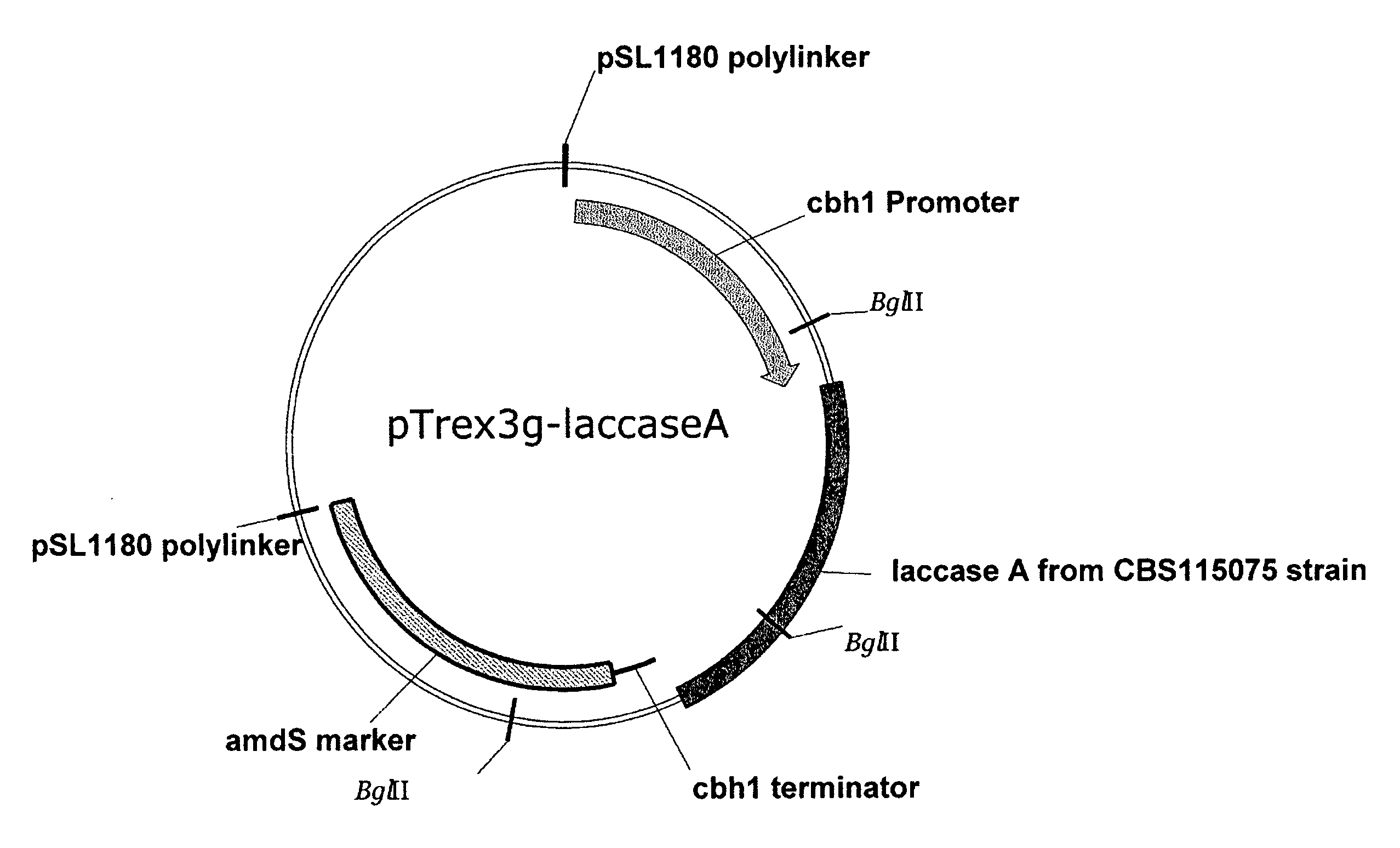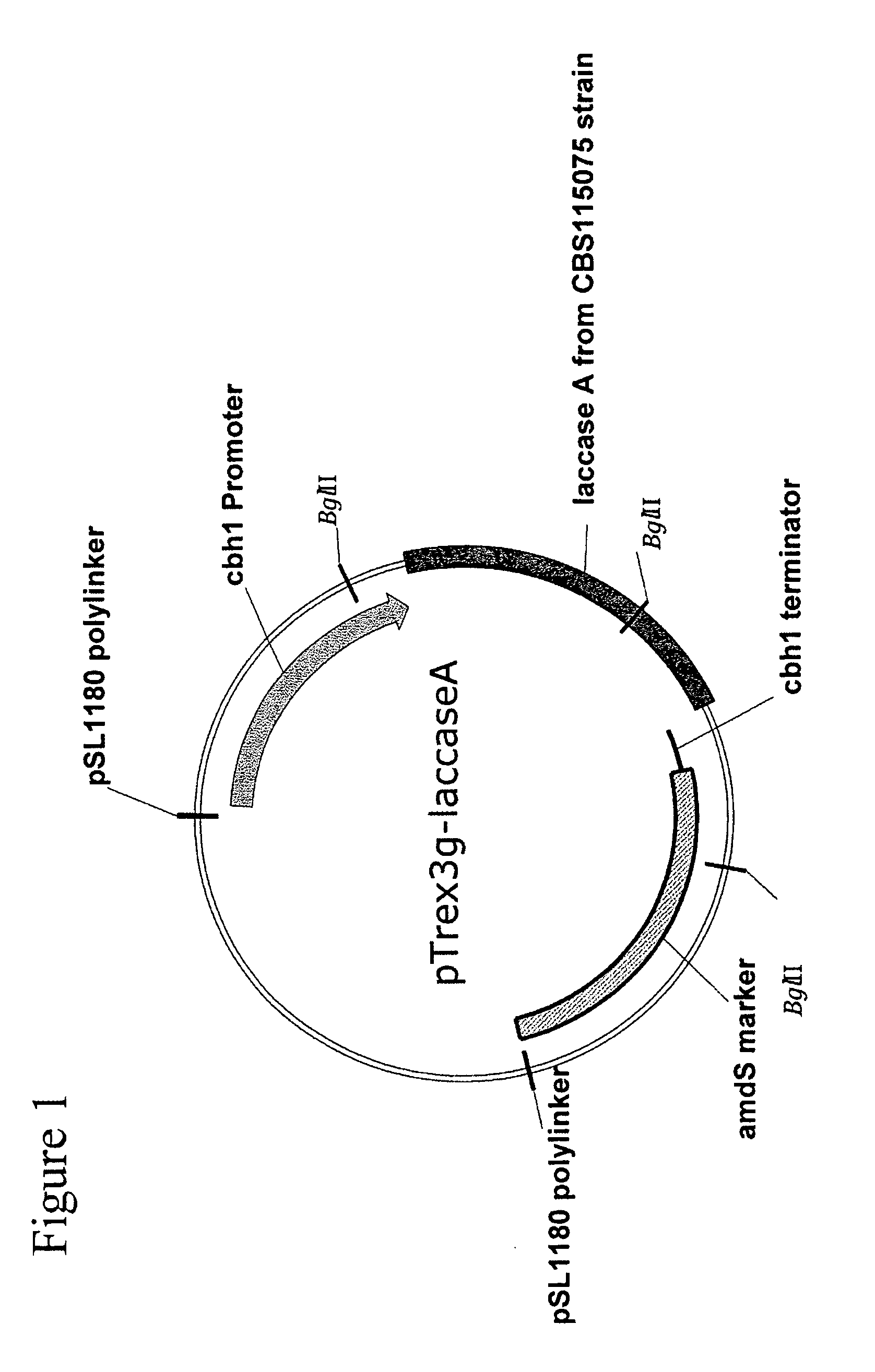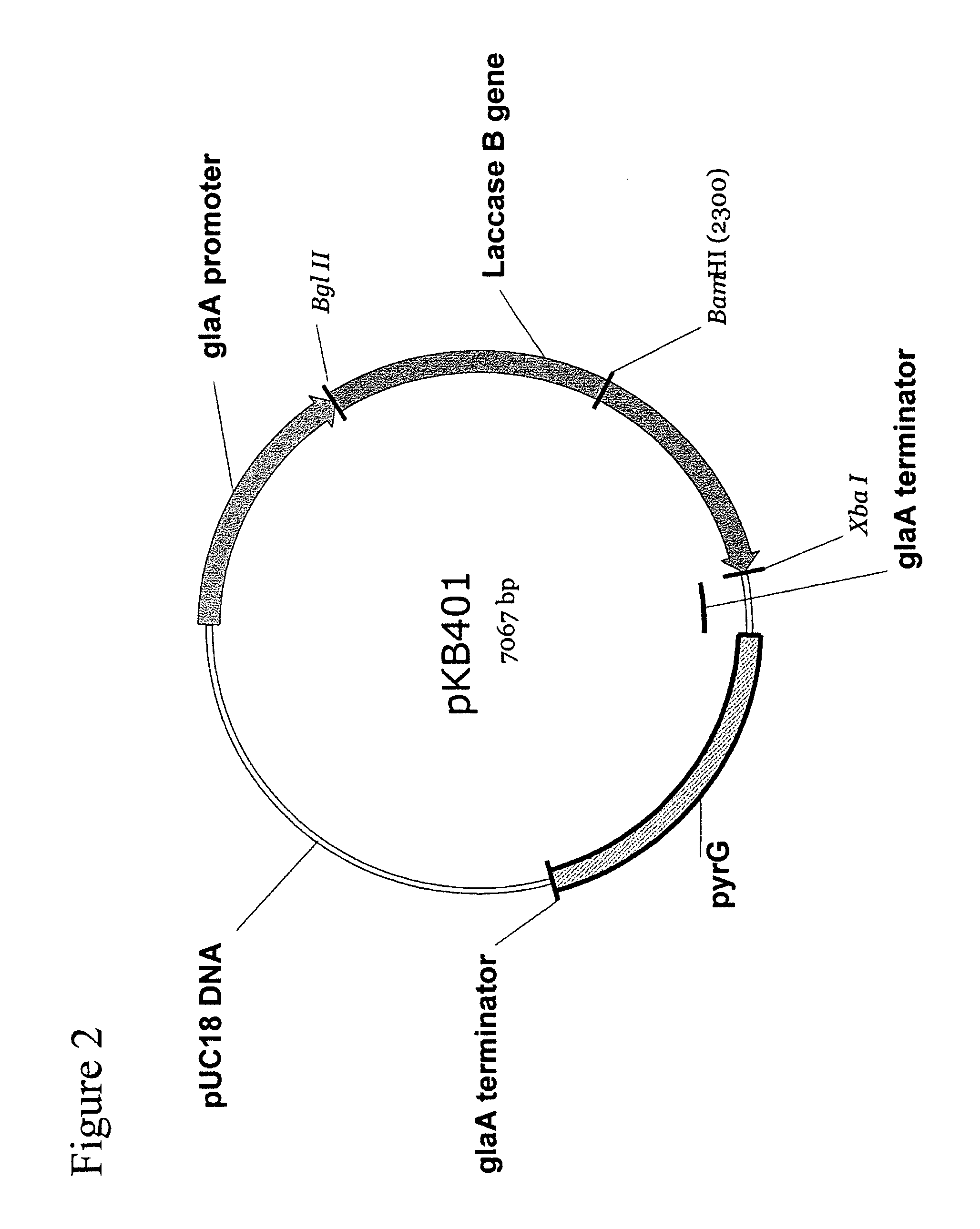Novel Laccases, Compositions And Methods of Use
a technology of laccases and compositions, applied in the field of laccases, can solve the problems of unsuitable for another application, the tendency of laccases to polymerize during use,
- Summary
- Abstract
- Description
- Claims
- Application Information
AI Technical Summary
Benefits of technology
Problems solved by technology
Method used
Image
Examples
example 1
Amino Acid Sequence Analysis of Cerrena unicolor Laccase
[0069]Four Peptide sequences were obtained using a commercially available laccase: AIGPVADLHI (SEQ ID No. 19), MLTPTSI (SEQ ID No. 20), TVGGPA (SEQ ID No. 21) and YSFVLNANQP (SEQ ID No. 22). The commercially available laccase was purified. N-terminal sequencing resulted in SEQ ID No. 19. Proteolytic digestion with trypsin of the purified sample was performed. Fragments were separated by gel electrophoresis with 3 bands selected and collected manually. Peptide sequencing was performed for each band and resulted in SEQ ID Nos. 20, 21 and 22.
example 2
a. Cloning of Cerrena unicolor Laccase A Gene from ATCC20013 Strain
[0070]To clone the laccase A gene from ATCC 20013 strain, two primers were designed and obtained from Invitrogen: TTCGCAGGTCAACGATATTC (SEQ ID No. 35) based on DNA sequence of the laccase B gene obtained from ATCC20013 strain (see example 3a) and GTTAGGTGGTTGAAGGATTG (SEQ ID No. 36) based on laccase A gene obtained from CBS115.075 strain (see example 2c). The primers were used in a highT PCR reaction containing genomic DNA obtained from ATCC 20013 strain as template (see example 3). The PCR fragment was purified using a QIAquick spin column from Qiagen and cloned into pTOPO plasmid using TOPO cloning kit (Invitrogen). Twenty-two clones were amplified using Ready-To-Go PCR beads (GE Healthcare) and three PCR fragments (2-1, 2-3 and 2-6) were sequenced. 1316 bps DNA sequence of the laccase A gene from ATCC20013 is listed as SEQ ID No 37.
b. Cloning of Cerrena unicolor Laccase A Gene from CBS154.29 Strain
[0071]To clone t...
example 3
a. Cloning and Sequencing of the Cerrena unicolor Laccase B Gene from ATCC20013 Strain
[0075]To clone the DNA fragment encoding the Cerrena laccase gene, four degenerated primers were designed based on the peptide sequence AIGPVADLHI (SEQ ID No. 19) and obtained from Invitrogen. They are named as
primerAGCAATCGGACCNGTNGCAGA;(SEQ ID No. 23)primerBGCAATCGGACCNGTNGCTGA;(SEQ ID No. 24)primerCGCAATCGGACCNGTNGCGGA(SEQ ID No. 25)andprimerDGCAATCGGACCNGTNGCCGA.(SEQ ID No. 26)
[0076]Two degenerated primers were designed based on the peptide sequence YSFVLNANQP (SEQ ID No. 22) and obtained from Invitrogen. They are named as
primerEGGTTGATTTGCATTNAGNAC(SEQ ID No. 27)andprimerFGGTTGATTTGCGTTNAGNAC(SEQ ID No. 28)
where N represents a mixture of all four nucleotides (A, T, C and G). The genomic DNA was extracted from ATCC20013 strain and used as template in the lowT PCR reaction contain following combination of primers: PCR reaction 1 contains no DNA and no primer; PCR reaction 2 contains primerA and ...
PUM
| Property | Measurement | Unit |
|---|---|---|
| pH | aaaaa | aaaaa |
| pH | aaaaa | aaaaa |
| pH | aaaaa | aaaaa |
Abstract
Description
Claims
Application Information
 Login to View More
Login to View More - R&D
- Intellectual Property
- Life Sciences
- Materials
- Tech Scout
- Unparalleled Data Quality
- Higher Quality Content
- 60% Fewer Hallucinations
Browse by: Latest US Patents, China's latest patents, Technical Efficacy Thesaurus, Application Domain, Technology Topic, Popular Technical Reports.
© 2025 PatSnap. All rights reserved.Legal|Privacy policy|Modern Slavery Act Transparency Statement|Sitemap|About US| Contact US: help@patsnap.com



